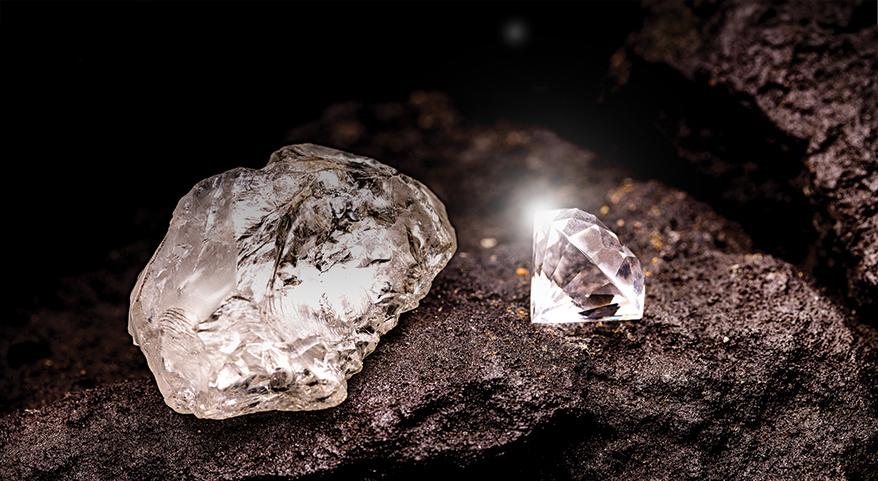Table of Contents
Introduction
What Are Mined Diamonds?
Diamonds, those sparkling gems as often as possible associated with extravagance and everlasting adoration, are created significant inside the Earth’s mantle. They form from carbon atoms arranged in a crystal lattice, giving them their renowned brilliance and hardness. However, here’s an astounding turn: disregarding their allure and saw rarity, mined diamonds are not as scarce as one would think.
The Legend of Rarity
The perception that diamonds are rare is largely a legend, orchestrated by the diamond business. While the facts really confirm that diamonds are formed north of millions of years mined diamonds are not rare, the amount available in the market is far from limited. This discrepancy between the reality of diamond abundance and public perception is a critical factor in understanding the diamond market.
The Diamond Business
Historical Context
Diamonds have fascinated humanity for many years, yet their advanced story began in the late nineteenth 100 years. The revelation of vast diamond stores in South Africa transformed diamonds from a rare extravagance into a more accessible ware. This shift was additionally accelerated by the establishment of strong diamond companies.
The Occupation of De Lagers
The De Lagers Gathering, established in the late 1800s, played a pivotal work in shaping the diamond market. By controlling diamond supply and creating a strong marketing campaign that emphasized the rarity and value of diamonds, De Lagers really manipulated the market to maintain unreasonable expenses and an apparent scarcity.
The Reality of Diamond Supply
Natural Diamond Stores
While diamonds truth be told do form under unambiguous conditions and over long periods, the stores found in places like South Africa, Russia, and Canada are substantial. These stores guarantee that a significant number of diamonds are available for mining and sale.
Mining and Extraction Cycles
Types of Diamond Mines
Diamonds are extracted through various strategies including open-pit mining, underground mining, and alluvial mining. Each strategy remembers various cycles and advances for any case contributes to the large stock of diamonds in the market.
Market Control and Value Manipulation
The diamond market is a classic example of organic market economics. Although diamonds are relatively abundant, their expense is controlled by vital participants like De Lagers, which impacts supply to maintain exorbitant expenses. This manipulation guarantees that diamonds appear rare and valuable, therefore supporting their significant cost.
Manufactured Diamonds
What Are Manufactured Diamonds?
Manufactured diamonds, created in laboratories, impersonate the natural diamond formation process yet in much shorter time. These diamonds are chemically and physically identical to natural diamonds however are every now and again more affordable because of the more controlled and successful production process.
Comparing Manufactured and Mined Diamonds
While manufactured diamonds offer a more affordable alternative, they also challenge the traditional market. They give a sans conflict option and decrease the environmental impact associated with mining, presenting a convincing case for consumers who are conscious about their purchases.
Environmental and Ethical Considerations
Environmental Impact of Diamond Mining
Searching for natural diamonds has a significant environmental impression. From land disruption to water pollution, the cycle can be damaging to environments. Sustainable practices are growing, yet the impact remains a concern for many.
Ethical Issues in the Diamond Trade
The diamond business has been condemned for ethical issues, including exploitative labor practices and conflict diamonds, which are used to finance brutal conflicts. The ascent of manufactured diamonds offers a solution to these issues, as they are conveyed under controlled conditions with no associated human opportunities abuses.
The Eventual fate of the Diamond Market
Patterns and Predictions
The diamond market is creating with increasing consumer awareness and technological advancements. Designed diamonds are ending up being more accepted, and the middle is moving towards ethical and environmental considerations. These patterns propose a transformative phase for the diamond business.
Man made diamonds, also known as synthetic or lab-grown diamonds, are created through technological processes that replicate the natural conditions under which diamonds form. Unlike their mined counterparts, these diamonds are produced in controlled environments using methods like High Pressure High Temperature (HPHT) or Chemical Vapor Deposition (CVD). Both techniques yield diamonds with the same physical and chemical properties as natural diamonds, including their stunning brilliance and hardness.
The Occupation of Innovation
Advancements in innovation, both in diamond production and mining systems, are shaping the fate of the business. Further created extraction procedures and the creating sophistication of designed diamond production are probably going to impact market dynamics significantly.
Conclusion
Summary
The notion that mined diamonds are rare is a crafted illusion rather than a fact. The reality is that diamonds are ample, however market forces and historical manipulation have created an image of scarcity. With the ascent of manufactured diamonds and creating awareness about environmental and ethical issues, the diamond market is near the precarious edge of significant changes.
Final Considerations
As consumers become more informed, the value of diamonds may get away from straightforward scarcity to various attributes like ethical obtaining and sustainability. Understanding the real pith of diamond availability helps in making informed decisions, whether you’re purchasing a sparkling pearl or simply appreciating its place in the market.









